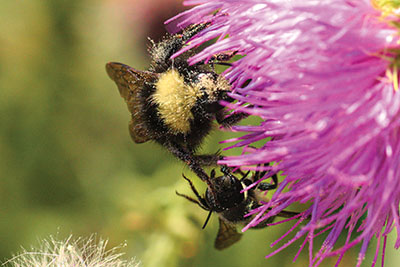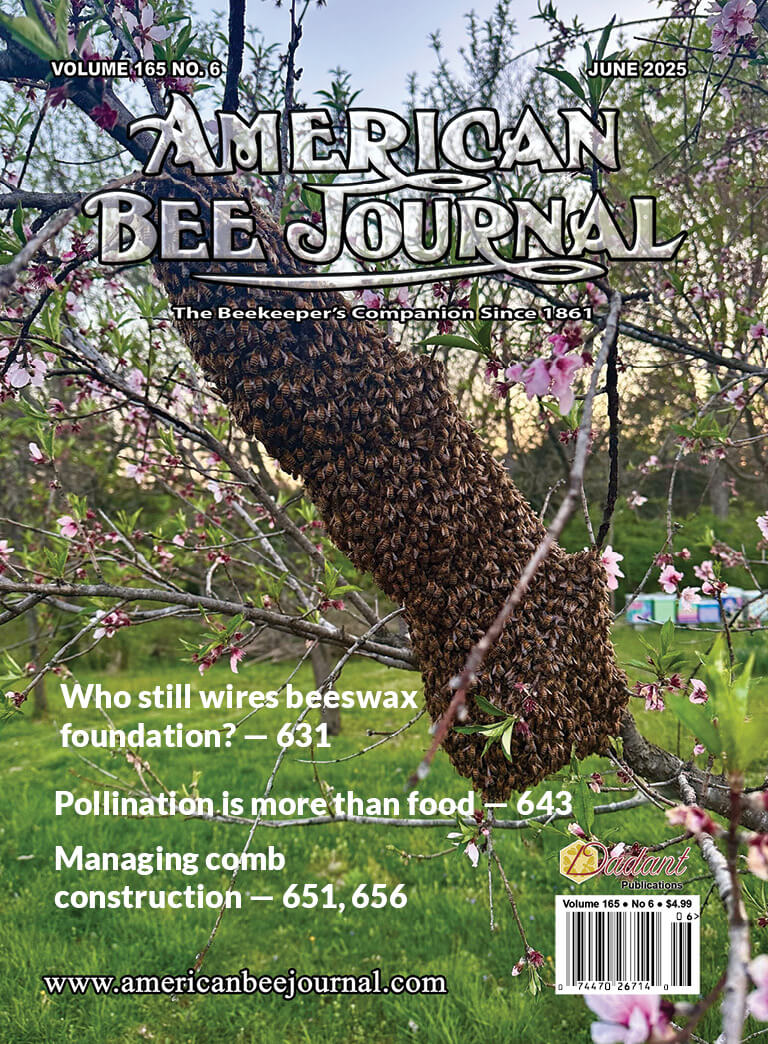
The room was fluttering with bee conservationists. The seats were occupied by men and women from all over the Pacific Northwest who had agreed to donate considerable sums of personal time and money to tramp across the tristate area and survey bumble bees. Butterfly nets, catch jars, and t-shirts were stacked next to doughnuts, coffee, and printed manuals.
About halfway through the classroom training, a women in the back of the room raised her hand. “I have a confession to make,” she said. “I am a beekeeper.”
The temperature in the room dropped ten degrees as a stony silence fell over the attendees. In the silence I became aware of a ventilation fan humming softly in the ceiling and muffled voices in the hallway. A child whined somewhere in the distance. In the frigid room, you could have heard a bee hiccup.
Beekeepers Anonymous
The scene reminded me of television depictions of AA meetings, the kind where a courageous person stands in front of the group and admits, “My name is Sue and I’m an alcoholic.” But instead of applause or recognition, this unfortunate woman was met with ice.
I slid lower in my seat and let my hair fall around my face. If I can’t see them, they can’t see me. Right? Although I prefer to attend any kind of bee meeting incognito, at least two people in the room knew me. I held my breath until the silence was broken by the group leader who said, “Thank you for disclosing.”
Disclosing? Really? I wanted to shout, “She’s a beekeeper, not a criminal.” Although I was annoyed, I wasn’t surprised. As someone interested in all types of bees, I’m well aware of this standard response. It’s an “us” versus “them” world, and it’s high time we put a stop to it.
Wrong on Both Ends
Many bee conservationists believe that beekeepers are the source of all their problems. They claim beekeepers invade pristine acreage, swipe all the available forage, spread disease, and generally displace the native species. For their part, some beekeepers complain that conservationists collude to keep them off the best forage by putting unreasonable restrictions on hive placement.
In my opinion, beekeepers underestimate the value and contribution of native bees, and conservationists overestimate the damage and competition caused by honey bees. There will always be beekeepers, and for the sake of the planet, let’s hope there will always be wild bees. In truth, beekeepers and bee conservationists have common problems and similar interests. Instead of being conclusory and antagonistic, both sides would benefit by working together to make life better for all bees.
What Bees are We Talking About?
I fault both groups for misrepresentation. In North America, most arguments I’ve heard assume there are only two groups: honey bees and native bees. Conservationists seem happy to defend all species of bees except the European honey bee, Apis mellifera. But wait! What about all the other introduced bees?
At least 55 species of bees have been introduced into North America since the honey bee,1 and I know of at least one more species that isn’t yet listed.2 Some of these bees now have massive distributions on the continent, including the alfalfa leafcutting bee, Megachile rotundata, and the horn-faced bee, Osmia cornifrons. Both these bees were introduced to pollinate specific crops, and both easily naturalized into the environment, just like the honey bee.
Most introductions were accidental. Nevertheless, some of those, like the European wool carder, Anthidium manicatum, can now be found in backyards and wildlands from coast to coast. In a few isolated cases, unsuccessful attempts were made to eradicate an introduced bee species, but with little success.3
Impacts of Non-Native Bees
A comprehensive 2016 literature review by Laura Russo of Penn State University 1 examines the impacts of non-native bee species throughout the world. Russo analyzed no less than 450 papers detailing both the positive and negative effects of introduced bees. She concluded that, for the most part, we simply don’t know or understand the impacts, especially since any negative consequences are often offset by positive ones.
Some of the possible negative effects from introduced bees are competition with native bees for forage and habitat, the spread of pathogens and parasites, increased seed set in invasive weeds, and decreased seed set in native plants. On the plus side, introduced species can increase the pollination of agricultural crops, pollinate plants whose native pollinators are in short supply, and can provide pollination buffers against human-induced habitat disturbance and changes in climate.
Many of the consequences of introduced bees, both negative and positive, are hard to prove and even more difficult to measure. The simple presence of introduced bees—including honey bees—doesn’t make them guilty.
Competition is Normal
Competition always exists when two or more species are dependent on the same resource. If you watch a group of native bees on a patch of flowers, you can see them tussle over territory. They often butt into each other, trying to force each other off the flowers. Add introduced species to the mix and they ….


